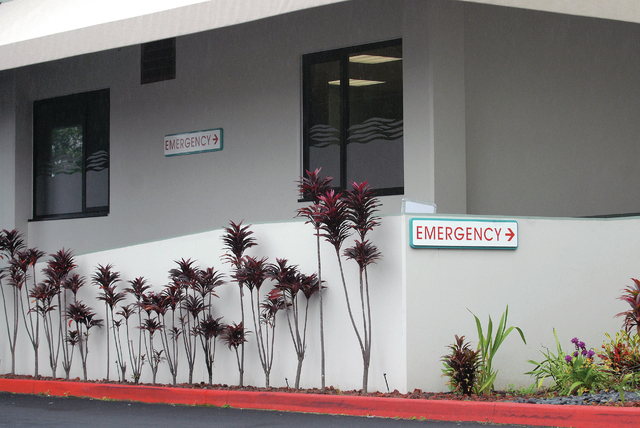KAILUA-KONA — The federal government released Medicare hospital ratings last week, and one Hawaii Island facility was found wanting. ADVERTISING KAILUA-KONA — The federal government released Medicare hospital ratings last week, and one Hawaii Island facility was found wanting. Hospitals
KAILUA-KONA — The federal government released Medicare hospital ratings last week, and one Hawaii Island facility was found wanting.
Hospitals were rated on Medicare’s Hospital Compare website on a five-star system, with five stars indicating the highest quality and one star indicating the lowest. Kona Community Hospital received a below-average rating of two stars, the lowest mark of any Big Island facility evaluated.
Judy Donovan, regional director of marketing and strategic planning at Kona Community Hospital, said the hospital takes exception to Medicare’s findings.
“We don’t agree with the two-star rating assigned to Kona Community Hospital,” said Donovan, adding KCH has implemented several initiatives geared toward patient satisfaction.
The Centers for Medicare and Medicaid Services tabulated ratings using up to 64 quality measures across seven categories, which include patient experience, effectiveness of care and timeliness of care.
In five of those categories, KCH was rated “same as national average.” In one category measuring the use of medical imaging there was not enough data to make a rating determination. The hospital had a below average rating in one category — patient satisfaction.
The data indicated several problem areas relating to patient satisfaction. The first was doctor-patient and nurse-patient communication. KCH fell short of state and national averages, as 74 percent of patients said doctors “always” communicated with them well, and 70 percent of patients agreed that nurses “always” communicated with them well.
Noise was also a concern, as only 49 percent of patients reported the area around their hospital room was “always” quiet during evening hours. Bathroom cleanliness at KCH also slotted well below par, as 61 percent of patients said their bathrooms were “always” clean.
Finally, there was the issue of pain. Less than two-thirds of patients, 62 percent, reported their pain was “always” well controlled and that they “always” received help as soon as they wanted.
KCH’s emergency room wait times were also longer than average for medium volume hospitals. The average wait time before patients were seen in the ER was 37 minutes, as opposed to a national average of 24 minutes and a state average of 16 minutes for other medium volume facilities.
Despite the Kona hospital’s disagreement with their rating, Donovan said the hospital values publicly reported data and directly incorporates it into policy and practice decisions.
“We focus on all of the patient satisfaction domains such as noise, communication and pain management,” Donovan said. “This type of direct patient input shows us where we need to improve. It defines how we can provide better customer service.”
More than 3,600 hospitals were evaluated, much to the chagrin of the hospital industry, which contended teaching hospitals and those that take on the most difficult cases receive unfairly disparaging ratings.
“Health care consumers making critical decisions about their care cannot be expected to rely on a rating system that raises far more questions than answers,” said Rick Pollack, president of the American Hospital Association. “We are especially troubled that the current ratings scheme unfairly penalizes teaching hospitals and those serving higher numbers of the poor.”
On behalf of KCH, Donovan echoed Pollack’s sentiment.
“We agree with Healthcare Association of Hawaii and the American Hospital Association that the CMS Hospital Compare Star Ratings report is somewhat misleading because it’s not risk adjusted,” Donovan said. “It doesn’t take into consideration a hospital’s patient population or the complexity of conditions treated.”
While a Medicare analysis did indicate teaching hospitals and those serving a high number of low-income individuals tended to rate worse than others, that was not universal finding. A prime example is high-volume Hilo Medical Center, a teaching hospital with 12 residents, which still managed to pull a four-star rating.
North Hawaii Community Hospital, a low volume facility, received an average rating of three stars, but ranked highest among evaluated Big Island hospitals in patient satisfaction.
Medicare said despite industry complaints, it believes the rating system fulfills an obligation to the public, serving it with meaningful consumer information, which is found to be generally helpful.



